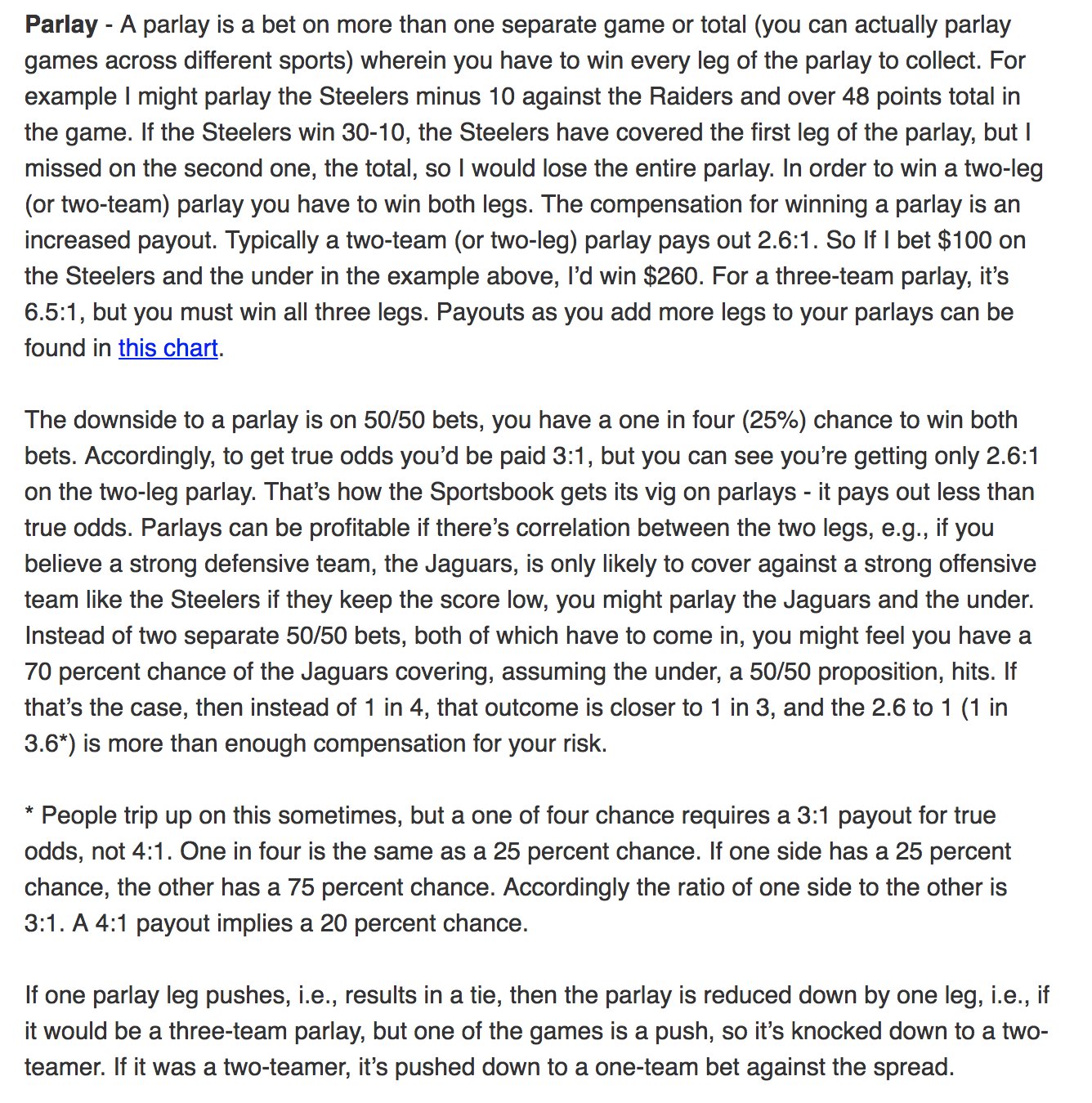Now that sports betting is about to be legal in various states, it's worth going over some basic parameters in that space. I wrote a detailed, but by no means exhaustive glossary of gambling terms a few weeks ago, but I want to delve into the value (or lack thereof) of parlays in particular.
From the glossary:
The key point is that for a two-team parlay, you need to win both legs of the bet. Each leg has a 50 percent chance of coming in, so your chances of winning both are 50 percent of 50 percent or 25 percent. The true odds of a bet with a 25 percent chance to come in should be 3:1 - 75 percent chance to lose, 25 percent to win = 3:1.
But two-team parlays pay out only 2.6:1. That's where the sports book takes its rake. The question then is how big is this rake, say, compared to the book's usual -110 rake on straight bets against the spread.
To find out, let's assume you made 100 $1 bets against the spread (ATS) and won half of them (the expected number, as it's a 50/50 bet.) You'd win $50, lose $50 and then lose another $5 in rake for a total of $-5. That's because you have to risk $110 to win $100, i.e., the reason the odds are typically denoted as "-110."
If you made 100 $1 two-team parlay bets and won the expected amount (25 of them), you'd win $25 * 2.6 = $65, while losing $75 for a net of $-10. As you can see, the rake on the parlay is twice as big as the rake on the standard ATS bet.
Accordingly, you should never parlay two (or more) teams unless you think there's correlation between the two legs. For example, if you parlayed the Raiders +10 at Pittsburgh and over 50 (the total number of points in the game), and you thought the most likely way the Raiders cover is in a shootout, 2.6:1 odds could be more than enough. Specifically, if you thought the game had a 70 percent chance to go over if the Raiders covered, then you'd be parlaying a Raiders cover (50%) and the over (70%) for a total 35 percent chance of hitting both. At those odds, anything over 2:1 (66.6:33.3) is more than enough to compensate you for the risk, and 2.6:1 would be a massive edge.
Bottom line, only parlay correlated bets.




